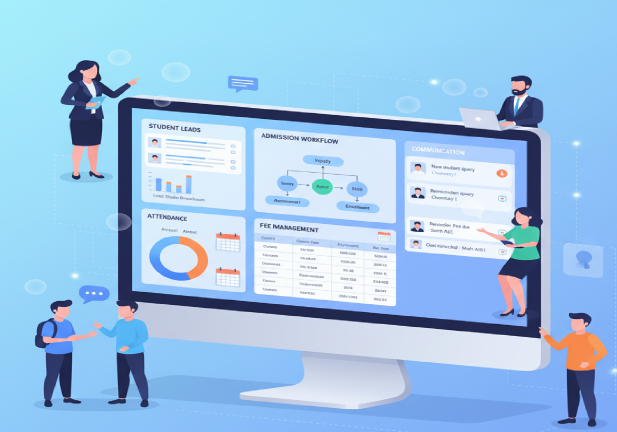In the fast-paced world of software development, the tech stack you choose is like selecting the right tools for a complex task. Whether youre part of a Mobile App Development Company, with a focus on Android app development or iOS app development, understanding how to pick the ideal tech stack is crucial. In this blog, well embark on a journey to explore the factors that guide your choice and the best practices for finding the perfect tech stack for your software development project.
The Heart of Software Development: Choosing the Right Tech Stack
The term "tech stack" refers to the combination of programming languages, frameworks, libraries, databases, and other tools that are used to build and run a software application. Your choice of tech stack can significantly impact the success and efficiency of your project.
Factors Influencing Your Tech Stack Choice
- Project Requirements:
- Your projects unique requirements should be your North Star. Consider the type of application youre building (e.g., web, mobile, desktop), the need for scalability, and the complexity of the features you plan to include.
- Team Expertise:
- Evaluate your development teams skills and expertise. Choosing technologies they are familiar with can lead to quicker development, fewer errors, and a smoother workflow.
- Scalability:
- Think about the growth potential of your project. Ensure your chosen tech stack can handle the evolving needs and increasing user base.
- Performance:
- Different tech stacks offer varying levels of performance. If your project requires high-speed processing or real-time capabilities, you need a stack that can deliver.
- Cost and Budget:
- Some technologies come with licensing fees, while others are open source. Consider the costs associated with your chosen tech stack and ensure they align with your budget.
- Community and Support:
- A strong community and reliable support are valuable assets. Open-source technologies with active communities often receive updates, security patches, and have extensive resources available.
- Security:
- Security is paramount. Ensure your tech stack has the necessary security features and is regularly updated to address vulnerabilities.
- Compatibility:
- Consider how well your chosen tech stack integrates with other tools, services, or platforms you plan to use. Compatibility can save time and resources.
Web Development Tech Stack Considerations
For web development projects, the choice of tech stack is pivotal. Here are some popular options:
- Front-End Development:
- HTML, CSS, JavaScript
- Frameworks: React, Angular, Vue.js
- Back-End Development:
- Server-Side Languages: Node.js, Python, Ruby, PHP, Java
- Frameworks: Express, Django, Ruby on Rails, Laravel, Spring Boot
- Databases:
- Relational Databases: MySQL, PostgreSQL
- NoSQL Databases: MongoDB, Cassandra
- Hosting and Deployment:
- Cloud Platforms: AWS, Google Cloud, Azure
- Web Servers: Nginx, Apache
Mobile App Development Tech Stack Considerations
For mobile app development, your choice of tech stack depends on the platform youre targeting, such as Android or iOS:
- Android App Development:
- Languages: Java, Kotlin
- IDE: Android Studio
- SDK: Android SDK
- Backend Services: Firebase
- iOS App Development:
- Languages: Swift, Objective-C
- IDE: Xcode
- SDK: iOS SDK
- Backend Services: Firebase
Cross-Platform Development Considerations
If you want to develop an app for both Android and iOS simultaneously, cross-platform development is a smart choice. Consider frameworks like:
- React Native: Allows you to build mobile apps using JavaScript and React. Its cost-effective and accelerates development.
- Flutter: Googles UI toolkit for building natively compiled applications for mobile, web, and desktop from a single codebase. Its known for its expressive and flexible UI.
The Role of Mobile App Development Companies
Mobile app development companies, whether specializing in Android or iOS, play a crucial role in guiding clients through the tech stack selection process. Heres how:
- Mobile App Development Company: As a mobile app development company, its your responsibility to assess client needs and make informed tech stack recommendations based on project requirements. Your expertise in Android and iOS app development gives you a deep understanding of the pros and cons of each platform.
- Android App Development Company: Android app developers should stay up-to-date with the latest technologies and trends in Android development, ensuring they recommend the most suitable tech stack for the project.
- iOS App Development Company: iOS app developers should be well-versed in the tools and technologies available for iOS app development, providing clients with tailored recommendations for their tech stack.
Conclusion: Navigating the Tech Stack Waters
In the dynamic world of software development, choosing the right tech stack is like embarking on a journey into uncharted waters. Whether youre part of a Mobile App Development Company, an Android app development company, or an iOS app development company, your success hinges on your ability to make informed decisions about your tech stack.
By meticulously assessing project requirements, team expertise, scalability needs, performance demands, budget constraints, and other critical factors, you can navigate the tech stack waters with confidence. Remember that the choice of tech stack is a foundational decision, and making the right choices at the outset can set your project on a course for smooth sailing and ultimate success.












